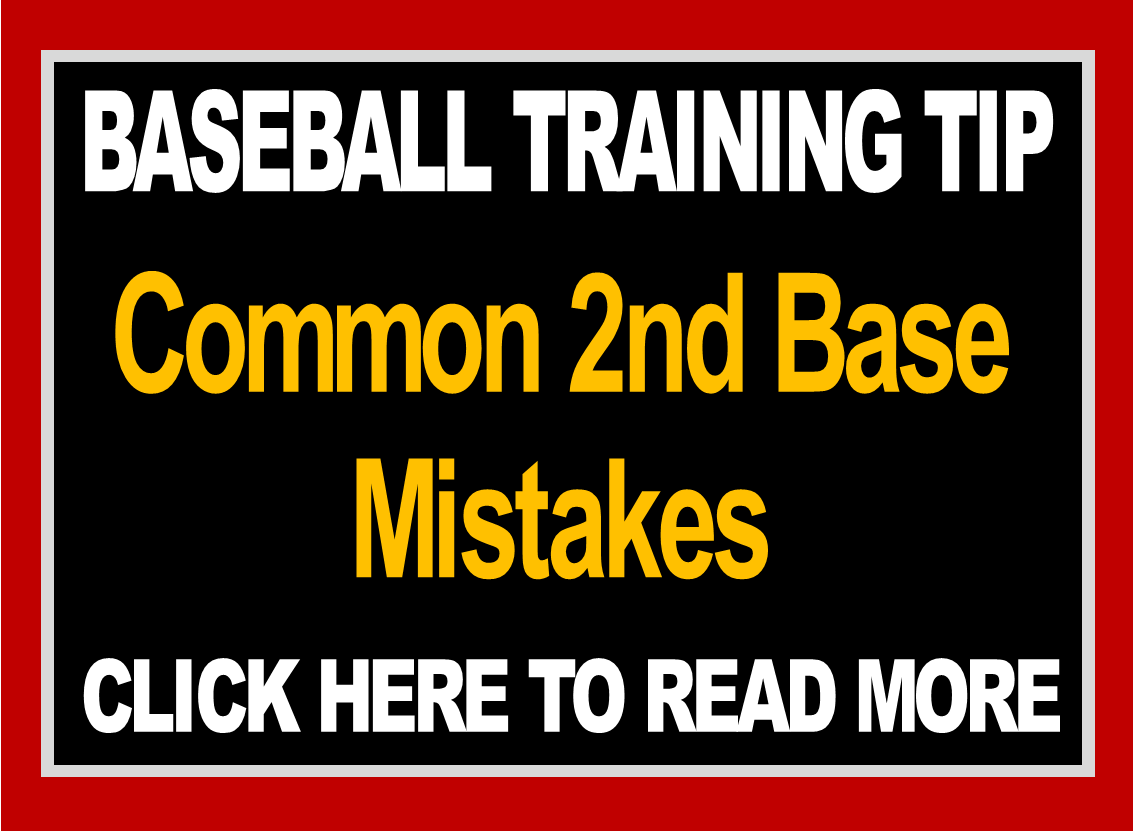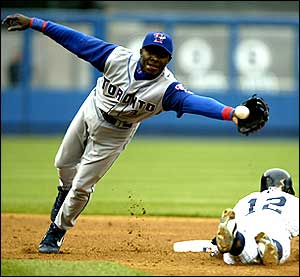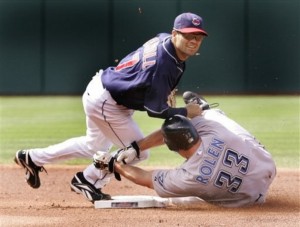
30 May Common Second Base Mistakes
Next up … common mistakes by second basemen!
Late getting to the bag. A second baseman has to master the area around the second base bag. A big part of that is getting to the bag on time for double play pivots, steals, and pick-off attempts. Slow footwork in their approach to the bag and positioning themselves too far from the bag are two big reasons why this happens. Know your foot speed and position yourself accordingly. If your footwork is slower, cheat closer to the bag before the pitch. If your foot speed is quicker, you can afford to position a bit farther from the bag. Tip: Stand where you would normally be if there were no runners on base. Now take three good size steps towards home plate and then three steps towards second base. That’s “double play depth.” (Note: The same is true for shortstops). A faster player could get away with 2 steps in and 2 steps over. The point is…know thyself and do what you need to do to get there on time.
Straddling the bag too soon. This applies to covering the bag on a steal attempt. Many second basemen get to the bag,
immediately straddle it, and wait for the throw from the catcher. This works as long as the throw is right on target. If not, and at the lower levels it usually isn’t, the second baseman is stuck in a horrible position to go get bad throws. (Note: This applies to a shortstop covering as well.) If the throw drifts towards the first base side of the bag, the second baseman will have to contend with catching the ball while trying to avoid a sliding runner. Many times the ball ends up in centerfield. The correct way is to get to the bag a little sooner (see “Late getting to the bag” above) and position both feet on the home plate side of second base. If the throw is on target, drop your left foot back over the bag (now you’re straddling it!), catch the ball, and apply the tag. If the throw is off-line, being in front of the bag allows you to move in any direction to go get a bad throw without worrying about contacting the runner. (Orlando Hudson does this correctly in the picture.) A coach will not be upset if the runner is safe. He will get upset if the ball ends up in centerfield and the runner gets to third. It takes a lot of practice but it needs to be done.
Using the same double play pivot. Too many second baseman find a double play pivot they are comfortable with and only use that one. Different situations call for different approaches to turning a double play. Who is giving you the feed? How far away are they? How hard is the throw? How fast are the runners? Is it a good throw? How strong is your arm? All these questions get computed and the best second basemen adjust accordingly. Coming across the bag is best in certain situations. Coming back off the bag is better in others. Straddling the bag sometimes works as
well. Knowledge of the varieties that exist and the work ethic to master them all makes you a more versatile second baseman. It also helps with your safety. The last thing I want is to have a runner like Scott Rolen know for sure where I’m going to be on a double play turn. If he does, he can put his head down at contact and run directly for the spot where he knows I’ll be. Advantage Rolen. If I show multiple varieties, he has to wait to see where I am going before he slides. Advantage me. It could be the difference between turning two and being knocked into left field.
Poor timing when jockeying runners. I admit, this may seem a little trivial but I tend to be a stickler on the little things. In an attempt to hold runners close, too many second baseman jump around and jockey the runner on second before the pitcher is even looking at them. All the second baseman is doing is wasting energy. Even worse, when the pitcher does finally come set and look back at the runner, some second basemen have already returned to their fielding position. The timing should be as follows: Move to within 15 feet or so of the bag and just wait still. The pitcher will get the sign from the catcher and should look back at the runner as he is coming to his set position. Start your jockeying only after he has come set and is looking at you. The runner will be on higher alert because you are jockeying close to the bag and the pitcher is paying attention. The tough part is breaking back to your position when the pitcher throws to the plate. Great players have better timing and get back quicker as well.






